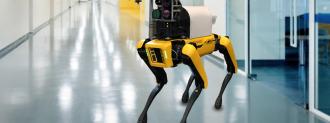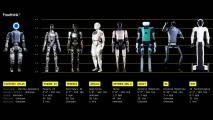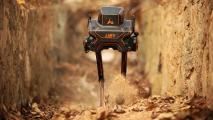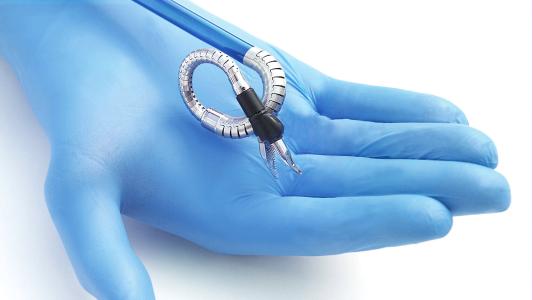Work and school weren’t the only things that went remote in 2020 — healthcare did, too, with hospitals and clinics leaning on telemedicine to help minimize the spread of COVID-19.
One emergency room in Boston took remote medical treatment to the next level, though.
It worked with MIT to develop a robo-dog that workers could use to treat patients from afar — and the patients didn’t seem to mind being seen by the “robot doctor” instead of a human one.
From Robo-Dog to Robot Doctor
The best way to avoid catching COVID-19 is to minimize contact with people who might have it — and that’s practically impossible for healthcare workers.
While PPE and other safety measures can help prevent infection, nearly 3,000 healthcare workers in the U.S. still died from COVID-19 last year, and the number is sure to increase until the pandemic is finally over.
In an effort to keep healthcare workers safe, researchers at MIT and Brigham and Women’s Hospital (BWH) teamed up with Boston Dynamics to convert one of the company’s robot dogs, Spot, into a robot doctor.
“In robotics, one of our goals is to use automation and robotic technology to remove people from dangerous jobs,” researcher Henwei Huang told MIT News. “We thought it should be possible for us to use a robot to remove the health care worker from the risk of directly exposing themselves to the patient.”
To modify Spot for use as a robot doctor, the researchers started by attaching an iPad to its back. This tablet could then display the face of the doctor or nurse controlling the robot, giving healthcare workers a less risky way to talk directly to patients.
They then mounted four cameras on Spot. Those fed data to algorithms that could determine patients’ vital signs — skin temperature, breathing rate, blood oxygen saturation, etc. — from up to two meters away.
“We didn’t really develop new technology to do the measurements,” Huang said. “What we did is integrate them together very specifically for the (COVID-19) application, to analyze different vital signs at the same time.”
Satisfied Patients
In August, the researchers published a paper detailing their creation of the robot doctor and its ability to accurately record the vitals of healthy volunteers in a hospital setting.
The next step was figuring out how patients would feel being treated by it — and potentially other robot doctors in the future.
“Often as engineers, we think about different solutions, but sometimes they may not be adopted because people are not fully accepting of them,” researchers Giovanni Traverso told MIT News.
“So, in this study we were trying to tease that out and understand if the population is receptive to a solution like this one.”
Patients said they’d be open to having a robot doctor ask questions and perform minor procedures.
They had healthcare workers at BWH’s emergency department use the robo-dog to communicate with 40 patients through the iPad. Those patients then rated the experience, and more than 90% reported being satisfied with the robot doctor.
The researchers also conducted a nationwide survey, asking about 1,000 people to share their feelings about the use of healthcare robots.
The majority said they’d be open to not only answering questions via a robot doctor — like the BWH patients had — but also having it perform nasal swabs or other minor procedures.
“We’re actively working on robots that can help provide care to maximize the safety of both the patient and the health care workforce,” Traverso said. “The results of this study give us some confidence that people are ready and willing to engage with us on those fronts.”
We’d love to hear from you! If you have a comment about this article or if you have a tip for a future Freethink story, please email us at [email protected].





